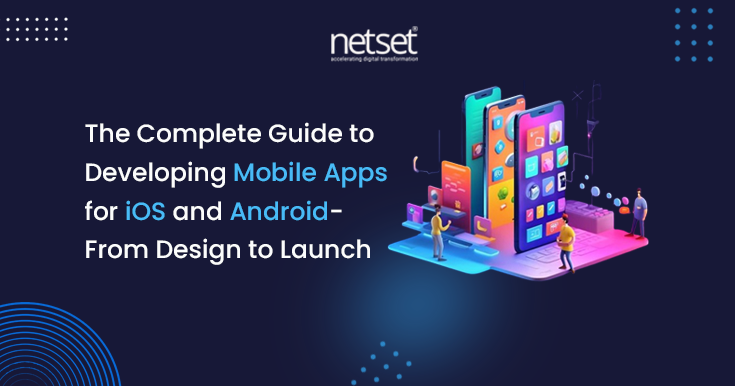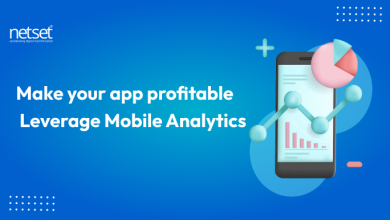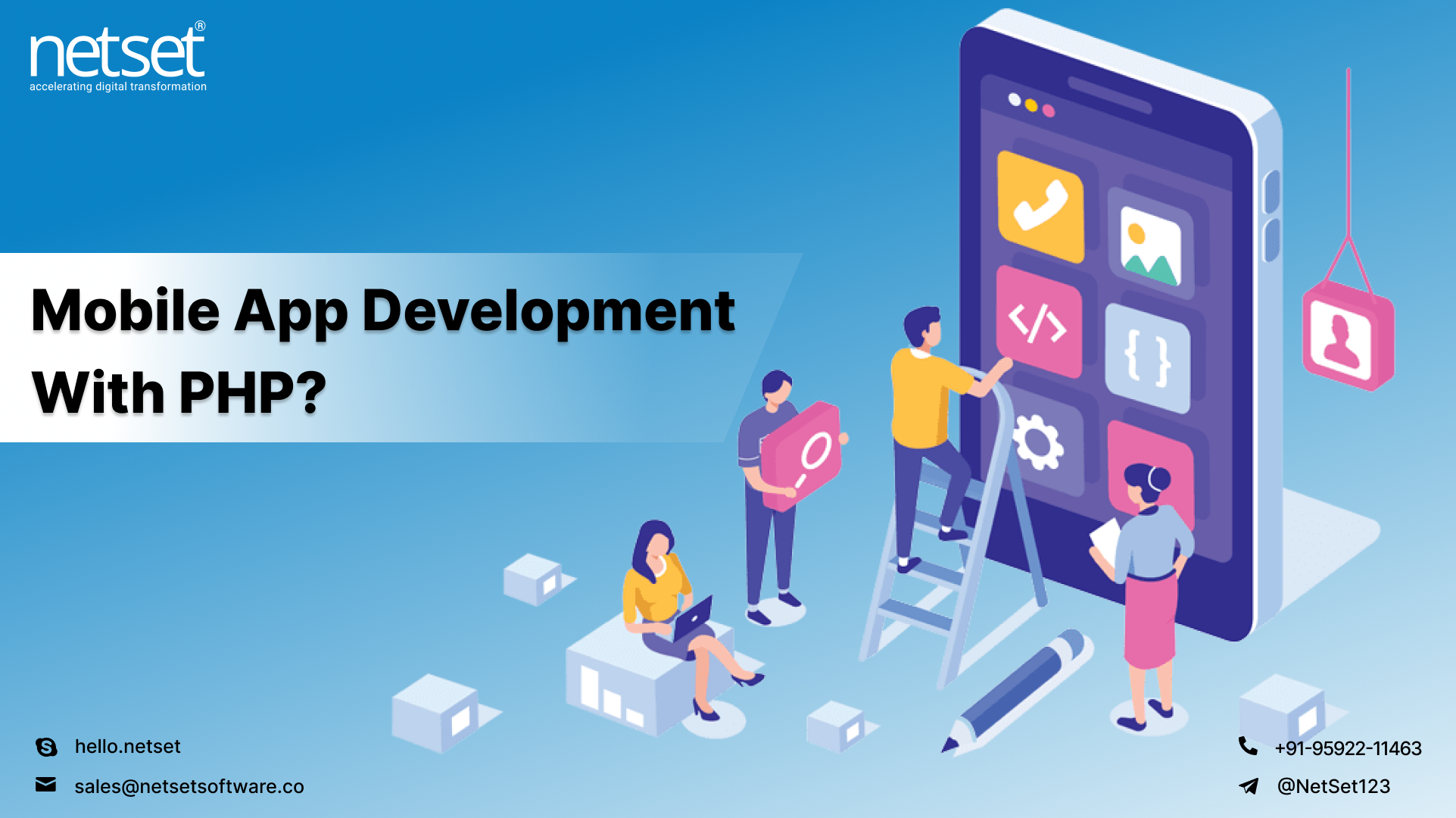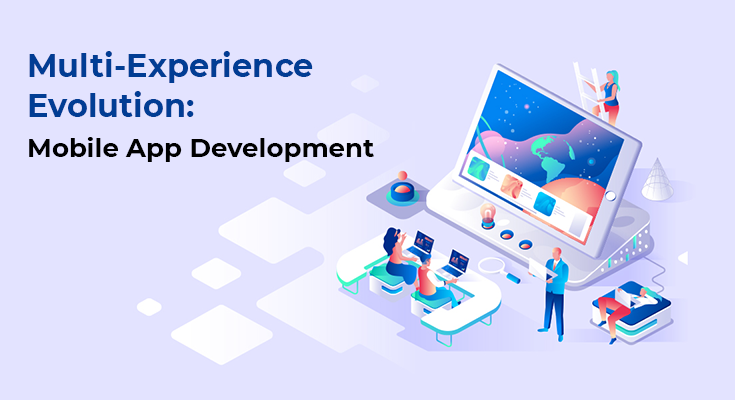The Complete Guide to Developing Mobile Apps for iOS and Android- From Design to Launch

From waking up with a morning alarm to checking multiple apps before heading to sleep, everything is handled by a single device in the palm of our hands. Users cycle through multiple apps to complete multiple activities like renewing the insurance policy, transferring money, communicating with loved ones, and checking those important work emails.
These tiny programs, known as mobile apps, have driven limitless innovations. And the potential with mobile apps is still huge, attracting a lot of entrepreneurs to solve real-life problems through a mobile app.
But, actually stepping into the mobile app development process, there is a need to understand it. Let us walk through the entire journey of developing a successful app, right from design to launch.
#1 Laying a Strong Foundation with Thorough Planning
Planning is the main ingredient that goes into any successful project, and it is true with mobile app development projects. You have to start by clearly defining what problem your app will be going to solve and identifying the right audience for the app. Around 60.42% of the world’s population now owns a smartphone, and you have to identify your segment of audience very carefully.
A sample planning process involves market research where you will identify the gaps in the market and find out how your app can stand out uniquely. There should be clear objectives and goals associated with your app, which will also guide you throughout your process. You can also research the industry standards that you want your app to meet.
With a strong foundation in place, you can move forward confidently into the design phase. Search for a competent mobile app development partner who can ensure you a quality product.
#2 Design Your App with User Experience in Mind
Once you lay the foundation, there comes the designing phase. The design of an app plays a key role in retaining the users, as it is the element that users interact with in your app. When it is engaging, you set yourself apart in the market.
Start with the UX design having a focus on the overall feeling of your mobile app.
- Create the user personas.
- Map out the complete user journey.
- Pick the color schemes, typography, and iconography for your brand.
- Wireframe and prototype your app using design tools like Figma and Adobe XD.
- Keep the navigation simple.
Every app that is successful has a very well-designed UX to reduce the bounce rates. For example, research from Forrester found that a well-designed UI raises the conversion rate to 200%, and a great design can even increase this number to 400%.
There are agencies that provide dedicated design services that you can consult. Convey everything related to the design with your app design and development partner to ensure that you get what you plan.
#3 Hiring an Expert Development Team
This is something a lot of entrepreneurs planning to build apps ignore. But skilled development is very important for the success of your app because they can turn your vision into a product, keeping the finest of details.
Use Google search to find the list of app development partners. Clutch and Good Firms are also some of the business directories where you can find the names of multiple companies and initiate discussions.
When you hire iOS app development experts, check their previous work. Install similar apps, if they have been developed, on your own iPhone. Similarly, if you want to hire Android app development experts, install their previous apps on your Android phone. Look for the overall user experience that the app is giving to you. Investing in a good development team will give you a high-quality output and save time and resources in the long run.
#4 Developing Your App to Bring Your Vision to Life
After a clear plan and engaging design in place, the development phase is where your mobile app will come to life. Here the first decision for you is to decide if you should choose native or cross-platform app development.
Native mobile app development is building your app separately for the iOS and Android platforms. When you pick native approach, the performance is solid because your app is installed on the device storage and your app can make use of hardware directly.
For iOS app development, Swift is the most common programming language. For Android app development, Kotlin or Java are the most popular languages. Know that this form of development is costly as compared to the later development choice.
Cross Platform is building your app with a single code base approach which means once you develop the app, it will run on iOS and Android apps both. Frameworks like React Native and Flutter are the most common ones to build a mobile app that works on multiple platforms.
Here you also have to be clear about the features and functionalities that will be present in your mobile app. There will also be a lot of testing which will take time. Working with mobile app development company in India can be cost efficient keeping a solid quality.
#5 Testing Your App to Ensure Quality and Performance
This is the step where your app will be ensured to meet the performance and user experience standards. The team of testers will test your app with different types of testing styles to fix issues before your app reaches the users. These include:
- Functional Testing to check if the features and functionalities of an app work as decided.
- Usability Testing consists of gathering feedback from real users and teams to find out if the app is user-friendly or not.
- Performance Testing ensures the app’s performance under various conditions like in high user traffic.
- Security Testing to check if the app is secure from vulnerabilities and threats like data breaches.
In the testing phase, different tools like Appium, TestFlight, and Firebase Test Lab are used. A researching platform released their report quoting 56% of the app users remove apps within the first week if they find any bugs and performance issues in it. So, it is very important to partner with a leading app development partner for vagarous testing of your app.
#6 Making a Successful Market Launch
The Market Launch Phase is as important as the planning and development phase. This is again a phase which requires careful planning and execution that determine the success of your mobile app. The first thing here is ensuring that your app meets the guidelines of Play Store for Google and app store for Apple else your app will be rejected.
- Create a compelling app store listing
- Focus on the description of the app
- The app right keywords that users might search
- Add high-quality screenshots
- Keep the app icon appealing
Next is to make a marketing strategy through social media, content marketing, and email campaigns. AN app with a solid pre-launching marketing campaign can achieve up to 2.5 times more downloads. Partnering with Influencers is also a solid form of marketing.
In the post-launch, keep an eye on the user feedback and reviews. Keep meeting the requirements of users so that customer loyalty increases and your brand image goes up.
Some Important Words Before We Wrap
There is a lot that goes into app development. You might be planning to hire an in-house team which is good for an established mobile app company. But for startups, it will be best for you to hire a mobile app development company in India (for cost-effectiveness) with a solid portfolio.
Throughout the phases, mentioned in the blog, keep monitoring, keep contacting your team, and keep giving feedback in different phases. With all these steps followed carefully, you will be able to launch an app that solves the user problem and takes a lead in the market.




